Ever wondered what your baby actually sees when they look up at you with those wide, curious eyes? Are they mesmerized by your smile or just confused by your nose?
Well, buckle up! Because your baby’s vision is like a slow-loading app—it gets better with time, and the progress is absolutely fascinating. Let’s explore the timeline of a baby’s vision in a fun, friendly way!
Week 1: Welcome to the Blur!
At birth, babies basically see the world like someone who forgot to wear their glasses. Blurry, fuzzy, and all in shades of grey. Their vision is about 20/400 (aka not great), and they can only see clearly 8–10 inches away. Just enough to focus on your face when you’re feeding them.
Color? Nope. At this stage, it’s more like an old black-and-white TV with bad reception.
Fun Fact: Your baby doesn’t know they have hands yet—but they will absolutely punch themselves in the face while flailing around. It’s unintentional. Promise.
1 Month: Hello, Shadows and Light!
At around 4 weeks, babies start noticing light and moving shadows. A ceiling fan becomes the peak entertainment of their day.
They might briefly lock eyes with you (awww!), but don’t take it personally if they stare at the window more than at your lovingly goofy expressions.
2 Months: A Splash of Color!
Color vision starts to kick in! Red is the first color they can detect—so if you’re dressing them in bold red onesies, you’re doing it right.
Their tracking skills are still a bit wobbly, but they’re beginning to follow objects with their eyes. Try slowly moving a toy side to side. You’ll see their little eyes try to keep up—like a clumsy tennis spectator!
3 Months: Faces Are Fascinating
By 3 months, your baby becomes a full-blown face detective. They love faces—yours, theirs in the mirror, even Mr. Potato Head’s.
Smiles now mean something—they recognize yours and might flash one right back. Get ready for serious heart-melt moments!
Their eye movements become smoother too, so they’ll start watching things more steadily rather than darting around like they’re watching a ping-pong match.
4–5 Months: Depth Perception, Activate!
Now things start getting cool—your baby starts developing depth perception. That means they begin understanding that things are closer or farther away.
Cue: the intense concentration while reaching for that toy giraffe just beyond their grasp.
Also, color vision is pretty well developed by now. Time to invest in colorful books, toys, and mobiles—they can appreciate all the shades!
6 Months: I Spy With My Improved Eye
Halfway through the year, and your baby’s vision is much sharper—about 20/40! That’s a huge leap from birth.
They now recognize familiar faces across the room and might start waving or babbling at them (or squeal in disapproval if it’s a stranger!).
They love playing peek-a-boo, not just because it’s hilarious, but because they now understand that something hidden can still exist. Thanks, brain!
7–10 Months: Action Mode ON!
Babies at this stage can track fast-moving objects and spot that cookie from across the room with laser precision. Crawling also improves their hand-eye coordination.
They’ll start judging distances much better, meaning climbing, reaching, and… toppling over. Eyes are working overtime while you’re doing damage control!
1 Year: Vision Nearly Adult-Like!
Happy first birthday! Your baby’s visual skills are now almost on par with yours. They can see across the room, recognize you from far away, and get suspiciously quiet when they find something they shouldn’t.
Their hand-eye coordination has improved drastically—they can point, pick up crumbs with precision, and swipe your phone faster than you’d expect.
Time to baby-proof your home… again.
What You Can Do to Support Baby’s Visual Journey:
- Face time, not screen time: Let them look at real human faces, not cartoons.
- Toys that move: Mobiles, rattles, and soft balls are all great.
- Play games: Peek-a-boo, pat-a-cake, and mirror games are more than fun—they’re visual workouts.
- Tummy time: Helps with visual and physical development.
- Check-ups: Schedule the first eye check-up by 6 months—even if everything seems fine.
The Big Picture
Your baby’s eyes are amazing little works-in-progress. From fuzzy blobs to full-on HD vision in just one year—what a ride!
So next time your baby gives you that long, thoughtful stare, remember: they’re not judging your hairstyle—they’re just figuring out the beautiful, colorful, moving world around them.
And trust us—they love what they see. Especially you. ❤️
